Mobicus Project: Battery Ageing Testing, Modelling and Strategies for Improved Durability
Philippe Gyan1*, Bastien Jovet2, Franck Sellier3, Julien Bernard4
1 Innovation Pilot Battery System Modelling, DEA-IREB–Service 68075, UET Innovations Batterie API: FR TCR LAB 0 121, Avenue du Golf, 78280 Guyancourt, France.
2 Battery Thermal Management Engineer Thermal Power Train, VALEO ThermalSystem8, RueLouis Lormand, 78321 La Verriere, France.
3 Product Line Manager -ElectricalSimulation & Test Solutions, Siemens Industry Sector, Siemens Industry Software S.A.S., 84, Quai Charles de Gaulle, 69006 Lyon, France.
4 Engineer, Head of ProjectIFP Energies nouvelles -Direction Chimie et Physico-Chimie appliquées Département Electrochimie et Matériaux, Etablissementde Lyon, Rond-point de l'échangeurde Solaize-BP 3, 69360 Solaize-France.
*Corresponding Author: Philippe Gyan, Innovation Pilot Battery System Modelling, DEA-IREB–Service 68075, UET Innovations Batterie API: FR TCR LAB 0 121, Avenue du Golf, 78280 Guyancourt, France, TEL: +33 1768 28956; FAX: +33 6 86 28 96 70; E-mail:philippe.gyan@renault.com
Citation: Philippe Gyan, Bastien Jovet, Franck Sellier, Julien Bernard (2019) Mobicus Project: Battery Ageing Testing, Modelling and Strategies for Improved Durability. SciEnvironm 2: 136.
Copyright:© 2019 Philippe Gyan, et al. This is an open-access article distributed under the terms of the Creative Commons Attribution License, which permits unrestricted use, distribution, and reproduction in any medium, provided the original author and source are credited
Received date: June 26, 2019; Accepted date: June 26, 2019; Published date: July 15, 2019.
Introduction
Electric Vehicles development and challenges of battery ageing.
Challenges on Battery Durability
Expansion of electric vehicles market: Over 600,000 electric vehicles sold worldwide by Renault -Nissan -Mitsubishi Alliance by end 2017 since 12/2010Twizy, Zoe, Kangoo, Master, NV200, Leaf1, Leaf2, Fluence, i-iev respectively
Lithium-Ion batteries: Over 170,000 Renault batteries leased.
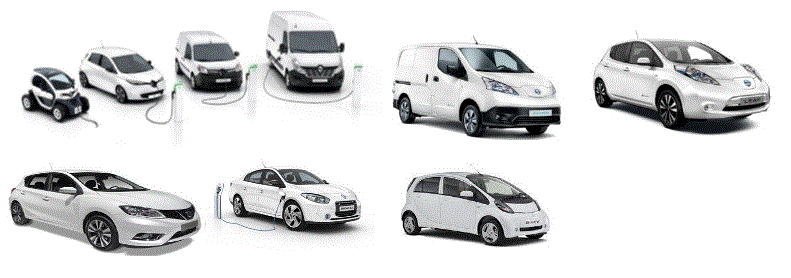
Lithium-Ion batteries: Over 170,000 Renault batteries leased
−Batteries subject to ageing
−Need to ensure battery performances and safety over time and usage
−Need to estimate accurately warranty costs and rental prices
Vehicle Usage Conditions
Calendar mode (Parking): Up to 95% of real time
Batteries of electric vehicles exposed to different ageing conditions
Calendar& Usage: Temperatures, - State of charge, - Current

Usage mode (Driving, Charging): From 5% to 25 % of real time
Ageing Consequences: • Range decrease, • Performance Fade, • Heat Generation

Need to study the combined influence of calendar and usage ageing
- Calendar (Rest)ïƒ Electric and thermal relaxations, effect of variable ambient temperature
- Usage (Current)ïƒ State of charge (SOC) variation and heat generation
Previous Experimentation on Battery Ageing

Mobicus Project: Application to Vehicle Usages
MOBICUS (2014-2017): French national collaborative project
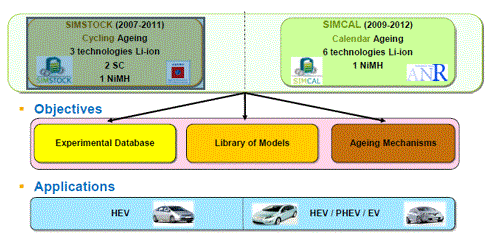
Modeling of Batteries Including the coupling between calendar and usage ageing
−16 partners, budget 4.3 M€
−Project Leader: Renault

Main objectives of the collaborative project
To test and understand the coupling between calendar and usage ageing
−To develop a single battery model representing calendar and usage ageing
−To design and validate strategies enabling to extend battery life according to real vehicle and customer usage
Mobicus: French National Collaborative Project
Design of Experiment, Measures and Analysis for calendar, cycling and mixed ageing protocols
Batteries Tested in Mobicus Project: Commercial lithium –ion batteries

| Characteristics at 25°c | TECH #1 | TECH #2 | |
| Nominal Capacity | Ah | 43 | 26 |
| Format | Pouch | Prismatic | |
| Electrochemistry | NMC-LMO | NMC/Ni Rich | |
| End of discharge voltage | V | 3.00 | 2.80 |
| End of charge voltage | V | 4.20 | 4.15 |
| End of charge current under floating voltage | A | 2.2 (~C/20) | 1.5 (~C/20) |
| Applications | BEV | PHEV | |
| Number of cells tested | 111 | 144 |
3 Packs
7 kWh
42 cellsTech #1 (3P14S)
Mobicus: Design of Experiment
Calendar Ageing conditions: −Constant Conditions, •4 temperatures (0°C, 25°C, 45 °C, 60 °C), •5 SOC (0%, 30%, 65%, 80%, 100%)
Thermal cycling, fixed SOC: •0°C -30°C for 11 weeks, 1 week Check Up, •30°C -60°C for 11 weeks, 1 week Check Up, •OC: 65% and 100%
Fixed Temperature, SOC variations: •Temperature 45°C, •SOC 30% for 11 weeks, 1 week Check Up, •SOC 80% for 11 weeks, 1 week Check Up
Cycling Ageing Conditions
Cycling: variation of +/-5% SOC around the reference SOC value, −Table of cycling conditions, −3 temperatures (0°C, 25°C, 45 °C), −4 SOC (30%, 65%, 80%, 90%), −2 current levels charge and discharge (Imin, IMAX), Total of 17 conditions
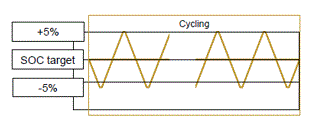
Mobicus: Design of Experiment for Mixed Ageing
Mixed calendar and cycling protocol: −2 temperatures (25 °C, 45 °C), −2 SOC (65 %, 80%), −2 durations of cycling (2h/12h, 6h/12h)
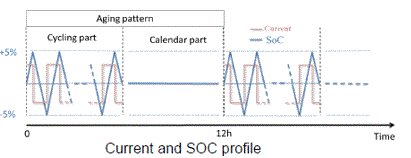
Table 1: Testing scheduling: Same power source for 3 different conditions

Table 2: Testing conditions
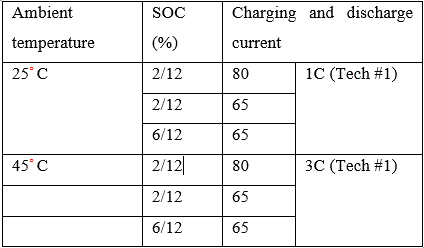
Purpose: Validation of the modeling approach combining calendar and cycling ageing
Mixed calendar and cycling protocol: Testing sequence (temperature details)
Temperature considered for ageing: Real cell temporal temperature, not ambient temperature
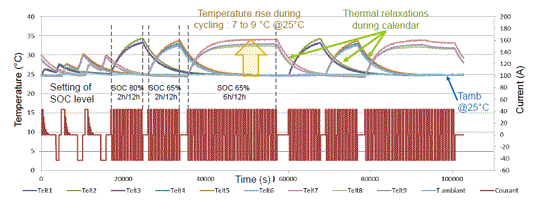
Mobicus: Calendar and Cycling Ageing Results
Capacity retention: calendar and variable SOC ageing tests TECH #1
Degradation speed accelerated with higher temperature
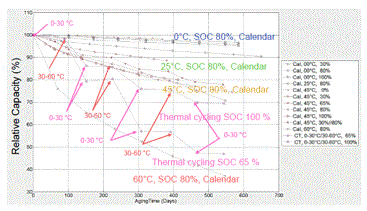
Capacity retention 25°C TECH #1
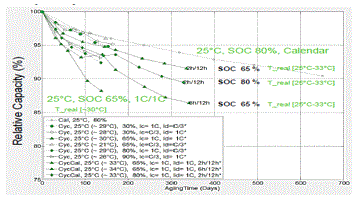
Capacity retention 45°C TECH #1

•Degradation speed affected by the time spent at a given SOC and real temperature
•Cycling effect on ageing more important at lower temperature - more heat generation from greater resistance
Battery Ageing Models Development of Electro-Thermal and Durability Models
Capacity Loss coefficient

| Parameters | ||
| a2 | To be calibrated | |
| a1 | To be calibrated | |
| a0 | To be calibrated | |
| Rt | 8.314 | J.mol^-1.K-1 |
| Ea | To be calibrated | J.mol^-1 |
| To (°C) | 273.15 | °C |
| Tref (°C) | From test design | °C |
Relative Capacity Variation: Integration of the conditions at each time step

Inputs:
SOC: State of charge [0-1]
Tbatt: Cell Temperature (°C)
t: Time elapsed since the beginning of tests
C_i: Relative Capacity at time step i
Output:
C_i+: Relative Capacity at time step i+
Calendar Simulation Results
Capacity Ageing: Measure and Simulation of Capacity Ageing
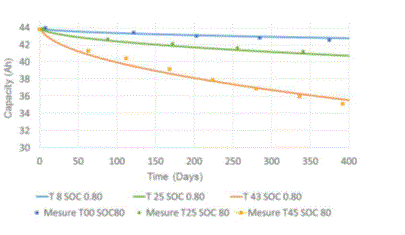
Effect of checkups performed à 25 °C, •1 week every 6 to 8 weeks
Good correlation between measures and model in fixed calendar conditions, with correction for check ups
Simulation of Ageing During Variable Ambient Temperature Conditions
Calendar conditions, with slow SOC variation
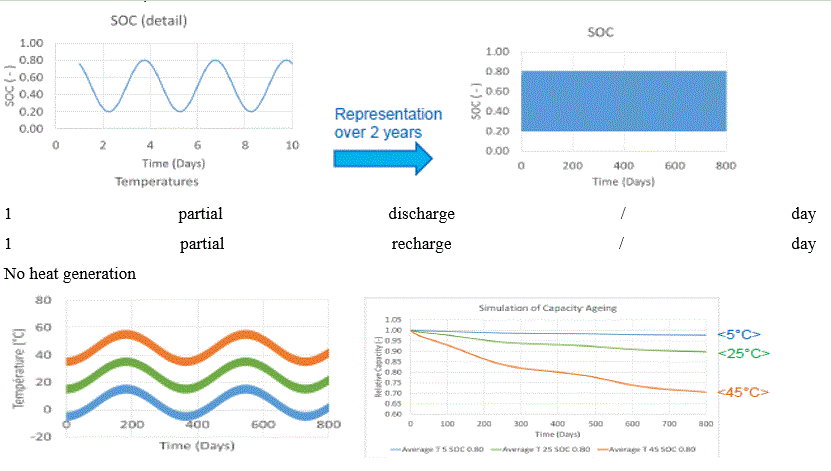
Seasonal Variations: +/-10°C
Intraday Variations: +/-3°C
Average temperatures: 5°C, 25°C, 45°C
Good representation of seasonal temperature effects on ageing
Application to Cycling Representation
Representation of Cell Characteristics
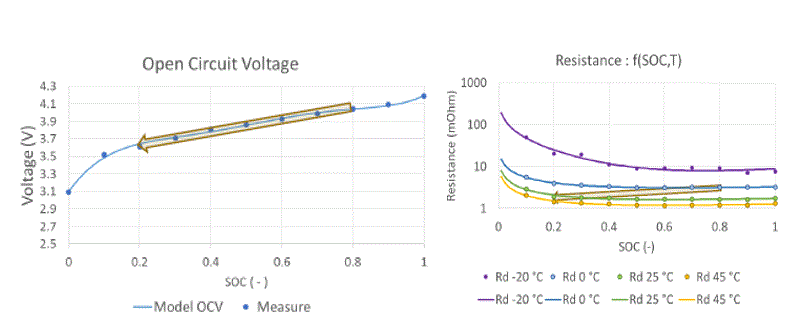
Current during cycling:
SOC variation
Heat generation (Joule Losses) ïƒ temperature variations
Nonlinear behaviors of OCV and Resistance during cycling Nïƒ for dynamic coupled models
Application to Cycling Representation
Cycling simulation tool: definition of cycling parameters
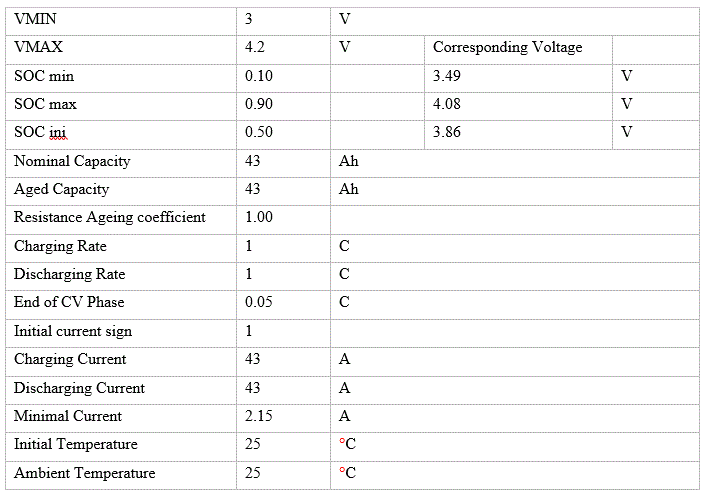
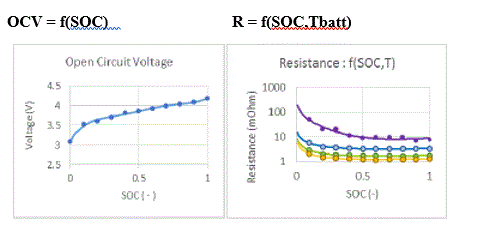
Coupling with basic thermal model
| Cell Basic Thermal Parameters | ||
| h | 20 | W.m-2.K-1 |
| S | 0,049 | M2 |
| M | 0,966 | Kg |
| Cp | 1000 | J/K |
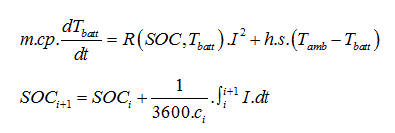
SOC Variations
Ci Ageing Dependent Capacity
Temperature variations during cycling
Strong coupling of Electric, Thermal and Durability models
Simulation Results of Cycling, Coupling of Dynamic Thermal Models
Cycling representation over 3 hours, 1C/1C, T 25°C, SOC 10%-90%

Detailed description of physical phenomenon: Voltage, Temperature, Ageing at cycle time scale
Simulation Results of Cycling, Coupling of Dynamic Thermal Models
Cycling representation over one year, 1C/1C, T 25°C, SOC 10%-90%
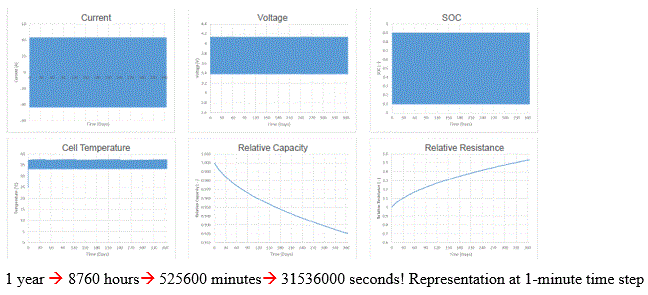
Simulation Results of Cycling, Coupling of Dynamic Thermal Models
Cycling representation over one year, 1C/1C, T 25°C, SOC 10%-90%, with pauses

Checkups account for about 1% relative capacity loss after a year! Need for precise history!
Simulations and Durability Strategies on Usage Scenarios
Evaluation of thermal management, strategies of better battery durability.
Mobicus: Definition of Usage Scenario on Packs
Application of three different ageing conditions on packs @ 25°C
Usage testing sequences on Packs
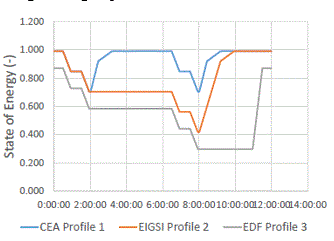
Identical discharge sequences with NEDC and WLTP profiles (~1 kWh)
Pack measurement (EIGSI)
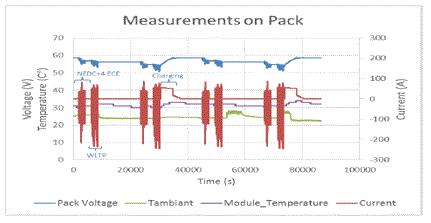
Reproduction of real usage conditions
Mobicus : Simulation and Measurement of Ageing on Packs for Different Usage Scenarios
Simulation of ageing over one day
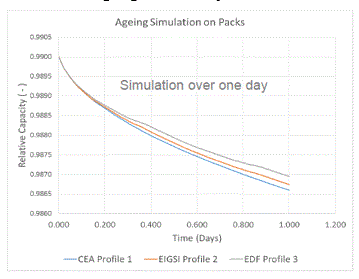
Measurements and predictive simulation
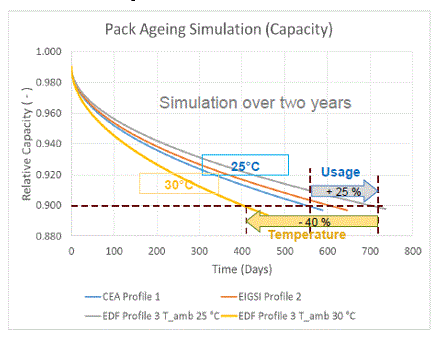
Expected durability gain by usage is lost because of unmanaged temperature!
Application of Dynamic Thermal Management
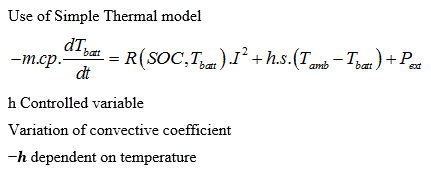
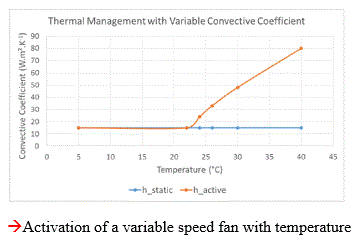
Simulation With Variable Ambient Temperature Conditions, Without thermal Management
Mixed Cycling 0.5C/2C 4h/12h SOC 60% (+/-20%), Average Temperature 20°C (+/-10°C)
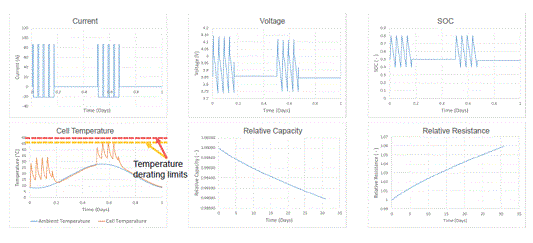
Derating risks for strong currents with higher ambient temperature
Simulation with Variable Ambient Temperature Conditions, with active Fan
Mixed Cycling 0.5C/2C 4h/12h SOC 60% (+/-20%), Average Temperature 20°C (+/-10°C)
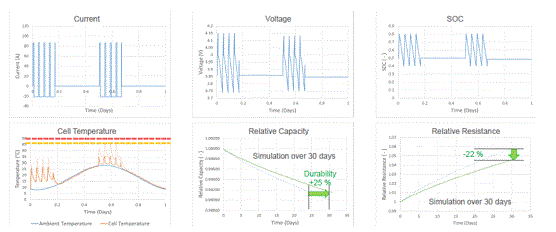
Derating Avoidance, and Durability gain with active thermal management
Applications to Fast Charging simulation
Charging from SOC 0.1 to SOC 0.99 during the day, Average Temperature: 25°C, +/-10°C
Case 1: Slow charging in the morning (C/4)
Case 2: Fast charging in the morning (2.5 C) –same starting time as Case 1
Case 3: Fast charging in the morning (2.5 C) –same ending time as Case 1
Case 4: Fast charging in the evening (2.5 C) –same ambient temperature as Case 1

Influence of Power level, timing of the charge, with daily temperature variations
Applications to Fast Charging Simulation

Less ageing during fast charging event; Timing of the charge has more influence than the Power of the charge
Representations of Durability Targets
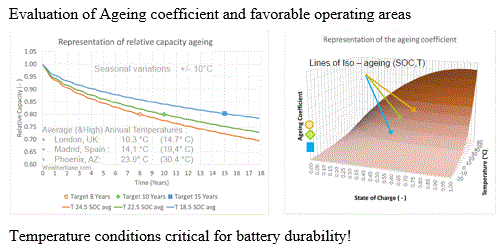
Integration of Ageing Models into Amesim
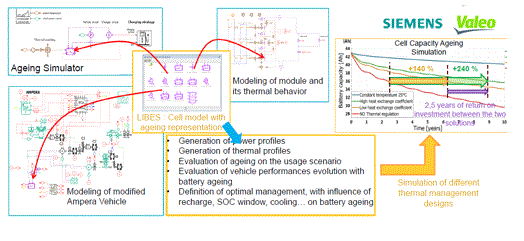
Previsions of economic impacts of different solutions (pumps, exchangers, …) in powertrain cooling design
Conclusion and Perspectives
Further Developments
Specific calendar, cycling, and mixed tests addressed within the French collaborative project MOBICUS
- Large collection of data, characterization and validation on cells and packs
Construction of Durability Models
- Strong coupling of Electric -Thermal -Durability behaviors
- Current during usage ->SOC variation and heat generation, Durability based on dynamic cell temperature
- Calendar behavior ->no Current, and thermal relaxations with same set of equations as usage.
Simulation of durability strategies
Great influence of :
- Charging schedule, over charging power
- Temperature level and Thermal management
- Definition of favorable operating areas (SOC, Tbatt) according to durability targets
- Evaluation of economic value of thermal management solutions versus durability
Perspectives: Battery Ageing Model Applications
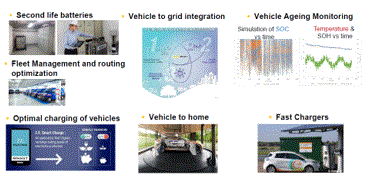
Acknowledgments
We acknowledge all members of the MOBICUS program (FUI15) for fruitful discussions and contributions. This program received financial support from BPI France, the Conseil Général des Yvelines and the Conseil Régional du Nord Pas De Calais.
